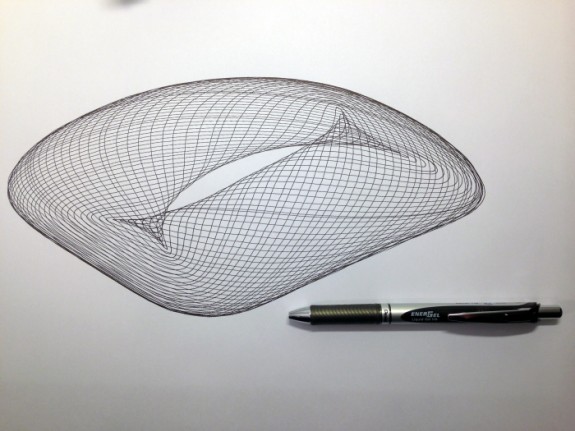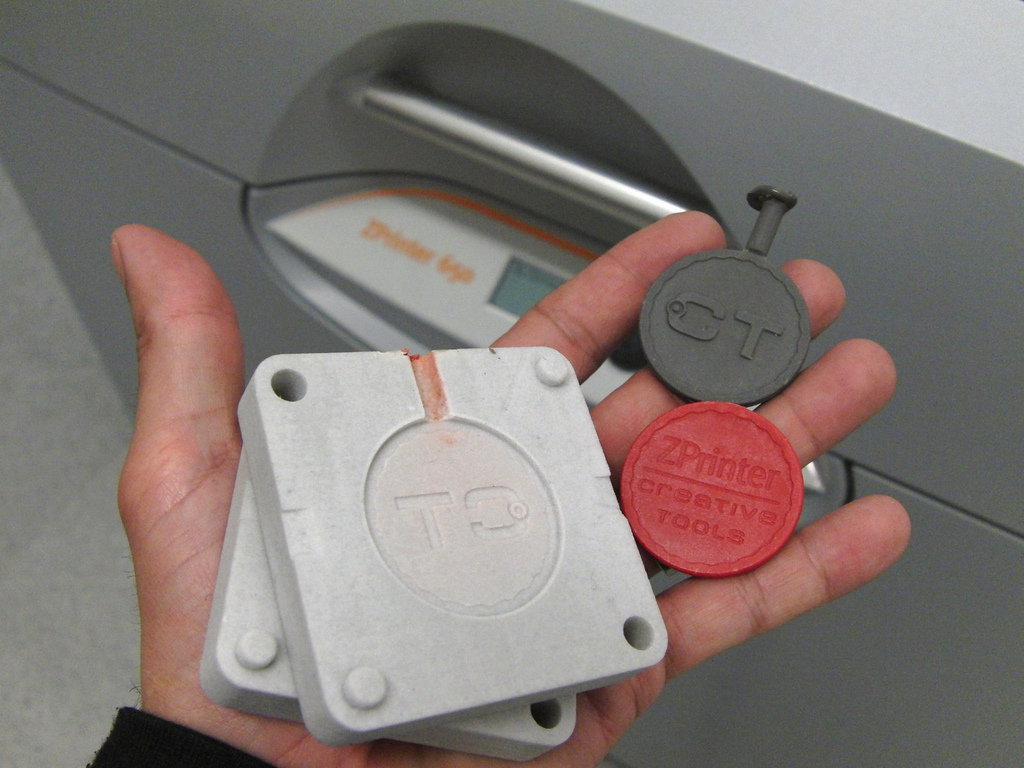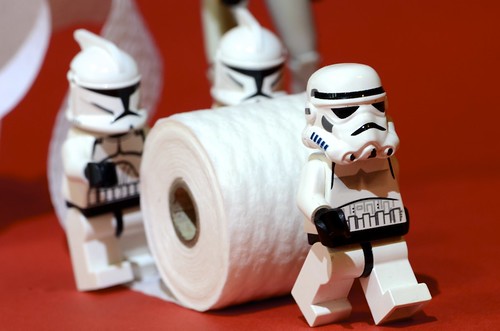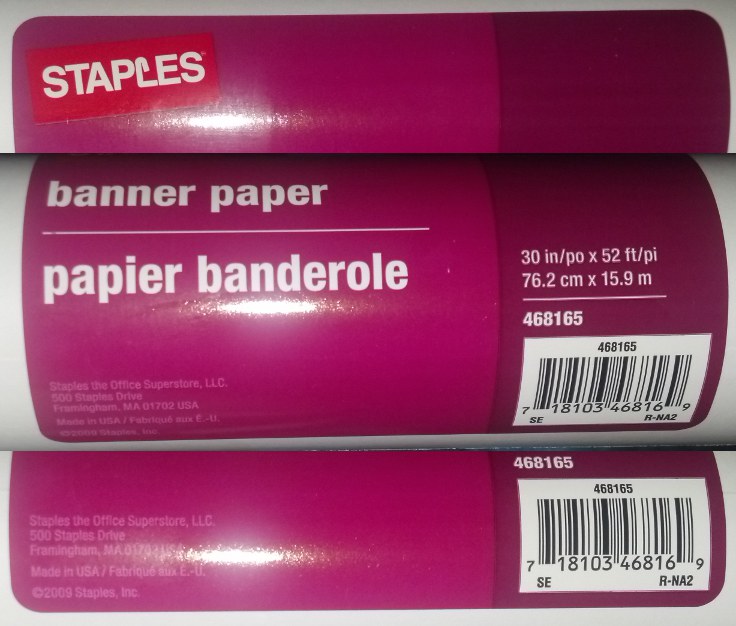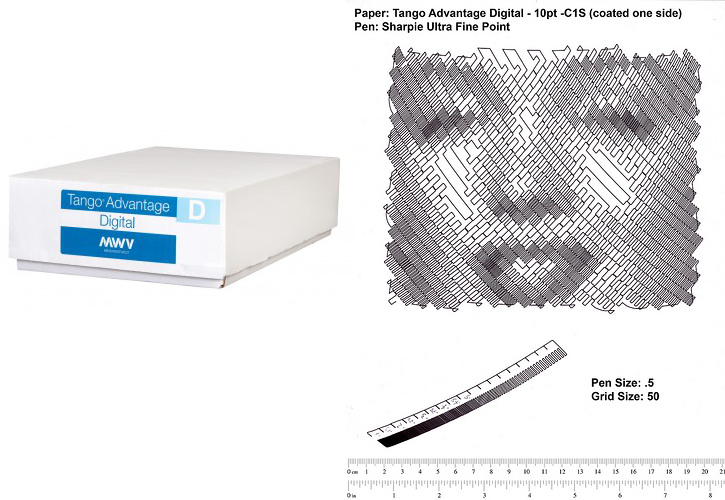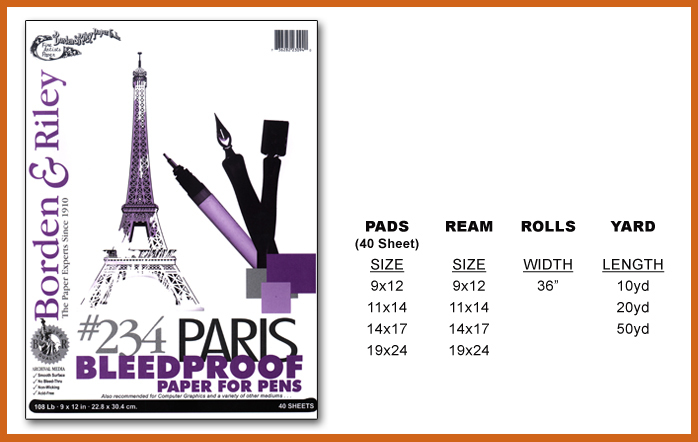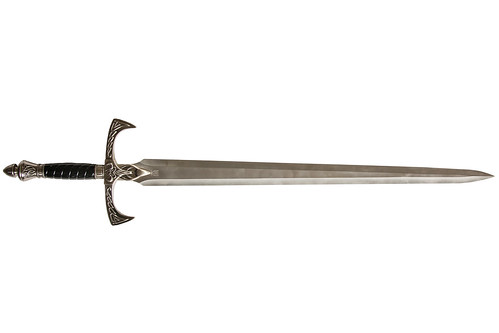
The Pen Plotter is Mightier Than The Sword
One of the most common questions from Maker Faire was whether I used any special pens.
There are a few issues to consider when selecting a pen to use with your drawing robot. First and foremost, the pen needs to be able to write consistently when it is positioned perpendicular to a vertical surface. Secondly, it shouldn’t dry out too fast – since a single large drawing could take as much as 6-8 hours. Third, it should have a large enough supply of ink enough to drawing of choice.
I’ve tried out lots of different kinds of pens – from normal office supply style gel pens, to permanent markers, to expensive art markers. Overall, my favorite pen to use was the art markers, but for most purposes I would probably go with a Fine Point Sharpie.

Prismacolor Premier art markers
Art Markers
Art markers, the kind you’d find at an art supply store, are really great. They come in a variety of colors and the ones I prefer, the Prismacolor Premier Chisel Double Ended markers have a wide and fine tip end to choose from. These particular pens seemed to last a really long time. I was able to draw three or four hour drawings with a single marker. The only downside to these markers are the cost. Amazon only sells these pens in large sets (12, 24, and 72 markers) that average out to about $2-3/marker. While you can buy them individually from your local art supply store, they will end up being about $3-5/pen. That said, if you just had to have a drawing with a particular color marker, you probably can’t beat the color sections from a Prismacolor set.

Sharpies
Sharpie Markers
Sharpies are ubiquitous, come in lots of colors, and are fairly cheap. A pack of assorted colors of Sharpies would probably average out to about $1-$1.5/pen. Chances are your local office supply store runs a deal on these every few weeks. I picked up a pack of 12 colors for about $5 just before Maker Faire this year. In my experience, a Sharpie Marker Fine Point would be good for about two big drawings. Sharpie also sells pens – which might work even better since they have a smaller surface area and may not dry out as quickly. I’ve experimented with trying to “revive” a dried out Sharpie by soaking the pen tip in rubbing alcohol (as I had read somewhere on the internet), but it didn’t seem to do much.

Pilot Precise V5 / V7
Pilot Gel Pens
One of my favorite pens for paper work/office use is the Pilot Gel series of pens. Of these, I prefer their “Precise” line of pens. They only come in a very few colors (red, black, blue, and green), but they are reasonably cheap (less than $1/pen when bought by the box). When used in a drawing robot, you’ll want to make sure they’re mounted at a slight downward tilt. They only come in either Fine Point or Extra Fine Point. For this reason they’re okay for small or medium sized drawings, but not very good for large pictures – as the lines would be too thin and the drawing would take too long.
Pen Reviews on Polargraph.co.uk
Sandy Noble’s website (Sandy is the creator of the Polargraph board and software I use for my own robot) has a great forum with lots of resources including several reviews and recommendations for pens. There’s a review and guide for Sharpies, one user recommended a “KOH-I-NOOR Fiber professional,” and Sandy expressed a preference for a Kuretake Zig Millennium.
UPDATE:
Two Polargraph users, Lanthan and Kongorilla, have posted the results of their tests using various pens, including ball point pens.
Also, be sure to check out the Egg-Bot documentation over at Evil Mad Scientist Labs for suggestions on pens and markers (and other things!) to use with their pen plotter. (Thanks Lenore!) I would point out that those pens were tested using the Egg-Bot, which holds the pen nearly vertically, versus a wall-hanging pen plotter which holds the pen nearly horizontal.


